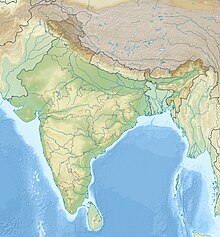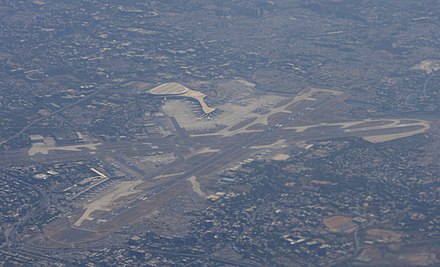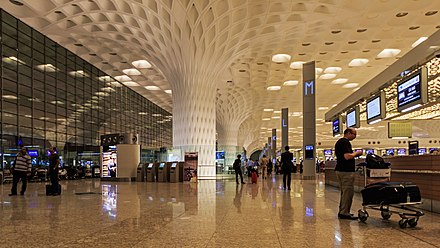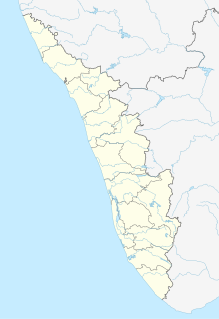| Chhatrapati Shivaji Maharaj International Airport | |||||||||||||||
|---|---|---|---|---|---|---|---|---|---|---|---|---|---|---|---|
 | |||||||||||||||
 | |||||||||||||||
| Summary | |||||||||||||||
| Airport type | Public | ||||||||||||||
| Operator | Mumbai International Airport Limited (MIAL) | ||||||||||||||
| Serves | Mumbai Metropolitan Region | ||||||||||||||
| Location | Mumbai, Maharashtra, India | ||||||||||||||
| Opened | 1942 | ||||||||||||||
| Hub for | |||||||||||||||
| Focus city for | |||||||||||||||
| Elevation AMSL | 11 m / 37 ft | ||||||||||||||
| Coordinates | 19°05′19″N72°52′05″E / 19.08861°N 72.86806°E Coordinates: 19°05′19″N72°52′05″E / 19.08861°N 72.86806°E | ||||||||||||||
| Website | www | ||||||||||||||
| Map | |||||||||||||||
| Runways | |||||||||||||||
| |||||||||||||||
| Statistics (April 2017 - March 2018) | |||||||||||||||
| |||||||||||||||
Chhatrapati Shivaji International Airport( IATA : BOM, ICAO : VABB), formerly known as Sahar International Airport, is the primary international airport serving the Mumbai Metropolitan Area, India. It is the second busiest airport in the country in terms of total and international passenger traffic after Delhi, and was the 14th busiest airport in Asia and 29th busiest airport in the world by passenger traffic in calendar year 2017 handling over 47.2 million passengers. [5] Its passenger traffic was about 48.5 million in fiscal year 2017-18. The airport is the second busiest in the country in terms of cargo traffic also. In March 2017, the airport overtook London's Gatwick Airport as the world's busiest airport with only one operational runway at a time. [6] The airport has three operating terminals spread over a total land area of 750 hectares (1,850 acres) [7] and handles about 850 aircraft movements per day. It handled a record 51 movements in one hour on 16 September 2014. [8] Along with IGI Delhi, it was adjudged the "World's Best Airport" at Airport Service Quality Awards 2017 in the highest category of airports handling more than 40 million passengers annually by Airports Council International. [9] It has also won the "Best Airport in India and Central Asia" award at the Skytrax 2016 World Airport Awards. [10] It is one of the three airports in India to have implemented Airport Collaborative Decision Making (A-CDM) to ensure timely takeoffs and landings. [11]
An IATA airport code, also known as an IATA location identifier, IATA station code or simply a location identifier, is a three-letter code designating many airports around the world, defined by the International Air Transport Association (IATA). The characters prominently displayed on baggage tags attached at airport check-in desks are an example of a way these codes are used.

The ICAOairport code or location indicator is a four-letter code designating aerodromes around the world. These codes, as defined by the International Civil Aviation Organization and published in ICAO Document 7910: Location Indicators, are used by air traffic control and airline operations such as flight planning.
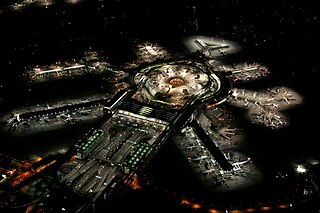
An international airport is an airport with customs and border control facilities enabling passengers to travel between countries. International airports are usually larger than domestic airports and often feature longer runways and facilities to accommodate the heavier aircraft commonly used for international and intercontinental travel. International airports often also host domestic flights.
Contents
- History
- Structure
- Runways
- Air traffic control tower
- Terminals
- Currently operational terminals
- Previous terminals
- Cargo
- Airlines and destinations
- Passenger
- Cargo 2
- Top domestic destinations
- Top international destinations
- Access
- Accidents and incidents
- 1950s
- 1960s
- 1970s
- 1980s
- 2000s
- See also
- References
- External links
The airport is operated by Mumbai International Airport Limited (MIAL), a Joint Venture between the Airports Authority of India and the GVK Industries Ltd led consortium [12] which was appointed in February 2006 to carry out the modernisation of the Airport. [13] The new integrated terminal T2 was inaugurated on 10 January 2014 [14] and opened for international operations on 12 February 2014. [15] A dedicated six lane, elevated road connecting the new terminal with the main arterial Western Express Highway [16] was also opened to the public the same day. [17]

The Airports Authority of India or AAI is a statutory body working under the Ministry of Civil Aviation is responsible for creating, upgrading, maintaining and managing civil aviation infrastructure in India. It provides Communication Navigation Surveillance / Air Traffic Management (CNS/ATM) services over Indian airspace and adjoining oceanic areas. It also manages a total of 126 Airports, including 11 International Airports, 11 Customs Airports, 89 Domestic Airports and 26 Civil enclaves at Military Airfields. AAI also has ground installations at all airports and 25 other locations to ensure safety of aircraft operations. AAI covers all major air-routes over Indian landmass via 29 Radar installations at 11 locations along with 700VOR/DVOR installations co-located with Distance Measuring Equipment (DME). 52 runways are provided with Instrument landing system (ILS) installations with Night Landing Facilities at most of these airports and Automatic Message Switching System at 15 Airports.

GVK is an Indian conglomerate spanning diverse sectors including energy, resources, airports, transportation, hospitality and life sciences. Having already invested over ₹240 billion (US$3.3 billion), GVK has projects in pipeline worth over another ₹360 billion (US$5.0 billion) in India. After acquiring Australian coal mines in Queensland for US$1.26 billion, GVK envisages an investment of US$10 billion in mine, rail and port project.
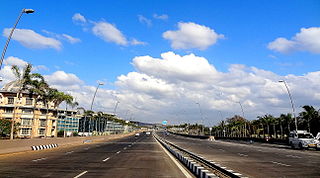
The Sahar Elevated Access Road, abbreviated to SEAR, is a dedicated, elevated, express access road in Mumbai that connects the Western Express Highway (WEH) near Hanuman Nagar junction in Vile Parle, with the forecourts of Terminal T2 of the Chhatrapati Shivaji International Airport. The road improves access and travel times between the WEH and the airport. The 2.2 km long access road has 4 entry and 2 exit points. The road also includes an underpass for vehicles travelling on the WEH and a pedestrian subway; as well as an underpass, a tunnel, and ramps connecting the highway to the terminal which bypasses the congested roadways below.
The airport is named after the 17th-century Maratha emperor, In 1999, the previous "Sahar Airport" was re-renamed "Chhatrapati Shivaji International Airport". CSIA's IATA airport code – "BOM" – is derived from Bombay, Mumbai's former name. It is situated across the suburbs of Santacruz, Vile Parle and Sahar village in Andheri.

Santacruz or Santa Cruz is a section of the municipality of Mumbai. The Santacruz railway station on the Mumbai Suburban Railway, the Domestic Terminal (T1) of the Mumbai Airport and one campus of the University of Mumbai are all located in Santacruz (east).
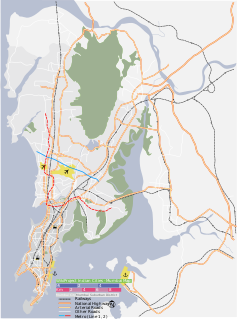
Ville Parle (IPA: [ˈʋile ˈpaɾle]), is a neighbourhood and also the name of the railway station in Western suburb of Mumbai. Vile Parle has a significantly strong base of Marathi and Gujarati population. Two temples - Virleshwar and Parleshwar - have been built, and named after the location. It serves as the location of the first Parle factory which ceased operations in year 2016. It houses Mumbai's Chhatrapati Shivaji Maharaj International Airport's Terminal 2.

Sahar Village lies in the Andheri suburb of Mumbai. It is among the oldest settlements of East Indians on Salsette Island. The village had a station on the Salsette-Trombay Railway that was dismantled after the rail line closed in 1934.


